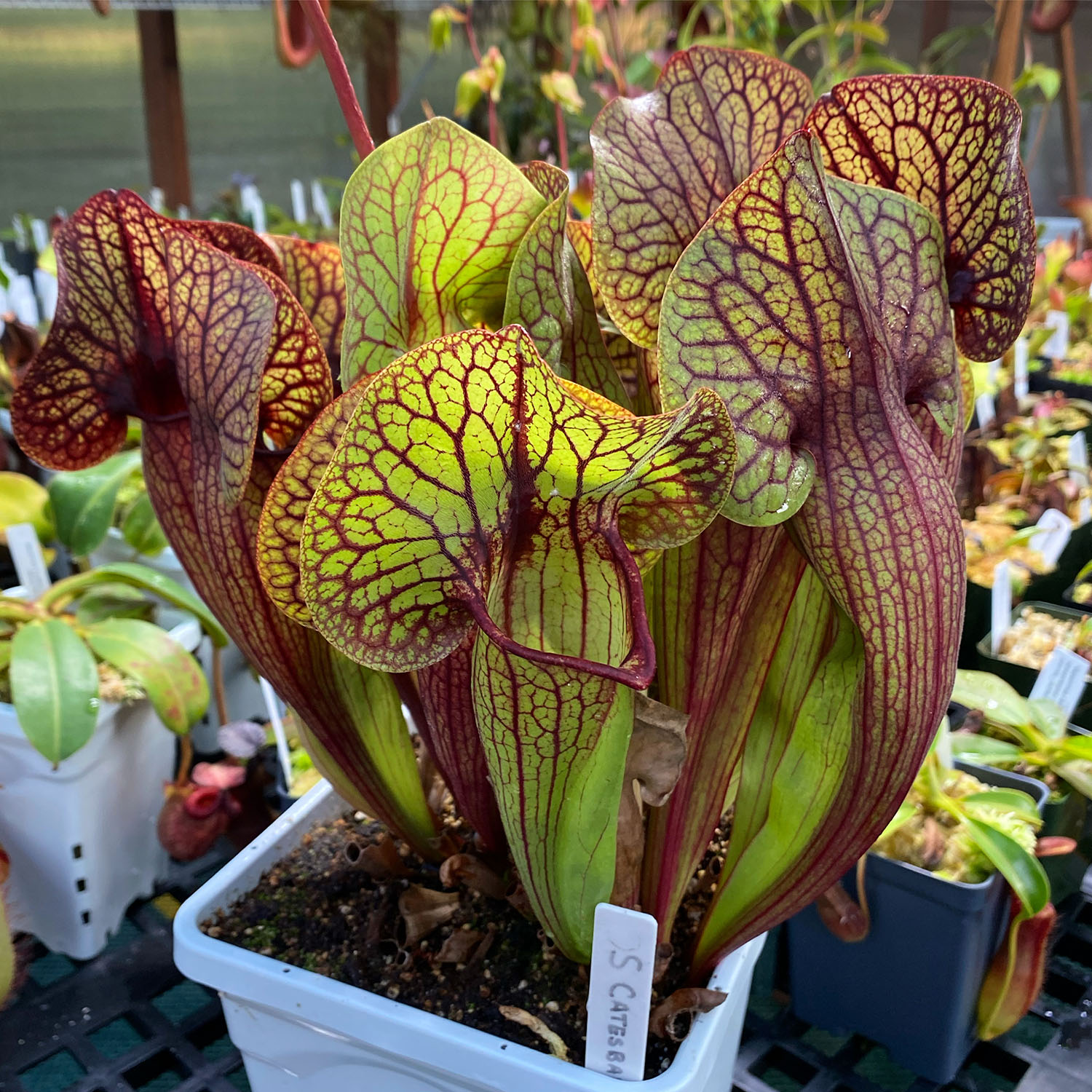Bog Plants

DescriptionBog Plants
Sarracenia are a native carnivorous plant that are found in bogs across the southeast of the United States. Sarracenia have evolved modified leaves that form a funnel like pitcher to trap insects. Nectar is secreted on the lip of the pitchers to attract insects to the slippery opening of the pitcher. Insects that fall inside are digested by the plant.
Sundews or Drosera is one of the largest genera of carnivorous plants and are found across the world. Sundews grow leaves with sticky glands. Insects that get too close will get stuck on these modified leaves and subsequently digested by the plant. Like other carnivorous plants, the additional nutrients from these insects supplements the nutrient poor habitats they have evolved in.
Potting Media
Potting Media
Sarracenia and most sundews can be potted in a mixture of 60% peat moss and 40% perlite. Like most other carnivorous plants, avoid any media with fertilizers such as MiracleGro.
Grow Guide
Grow Guide
Sarracenia and sundews prefer to be grown in shallow bogs where the growing media is kept continually moist. Generally, these bog plants will thrive outside in full sun but can also be grown on a sunny window or under grow lights. Bog plants can be potted in larger bogs or individual pots can be placed in a plant saucer. Ensure there is always some water in the tray or bog to keep the media moist. Like all other carnivores, sarracenia and sundews appreciate clean water that is low in total dissolved solids (TDS). Depending on where you live, this can be straight from the tap or filtered through a DI or similar system.
Sarracenia and some species of sundews have a winter dormancy. During this time, much of the growth above the surface will die back. This will be triggered by seasonal changes in temperature and daylight hours. During this time, keep the soil just damp until the next growing season begins. If the temperatures are expected to fall below freezing for an extended amount of time, bring them inside or cover with some protection like pine needles or an antifreeze tarp.